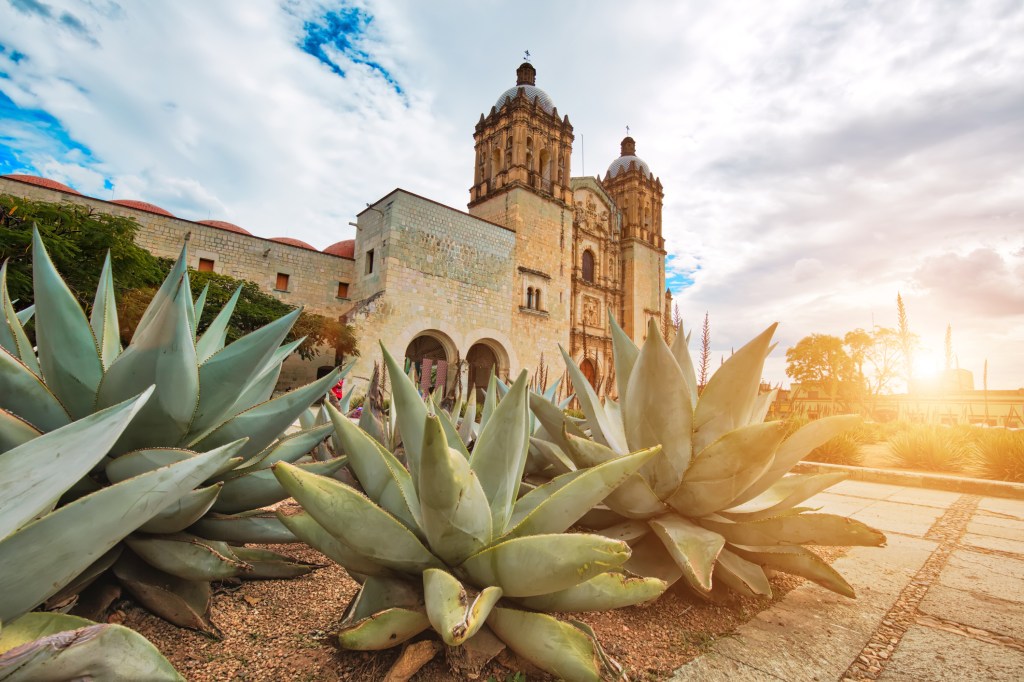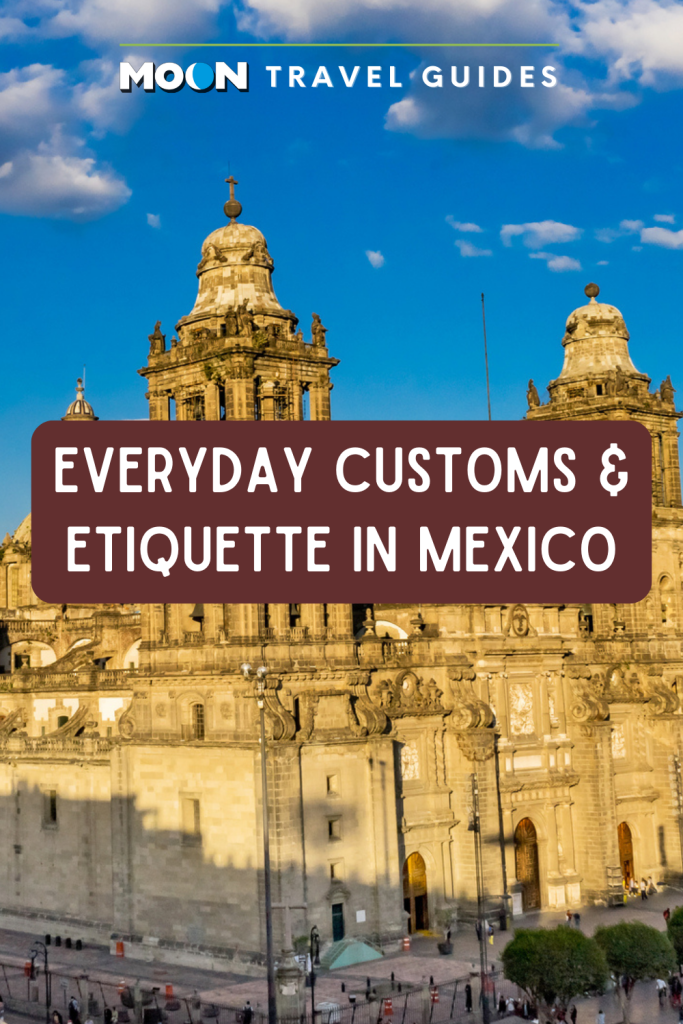Everyday Customs & Etiquette in Mexico
Though you’ll notice different attitudes and customs throughout the country, Mexicans are generally charming, courteous, and polite. Even in casual encounters, Mexicans generally address each other with formality and respect. While good manners are universally appreciated, Mexicans understand that foreigners may not understand the country’s codes and customs. If you make an effort to be polite, show patience, and smile, you’ll generally be appreciated in Mexico.

Terms of Address
Mexicans are generally polite and formal when interacting with people they do not know well. When speaking to an elder or to someone with whom you will have a professional relationship, it is customary to use the formal pronoun usted instead of the informal tú. If you are unsure which pronoun a situation requires, you can always err on the side of caution by using usted with anyone you’ve just met.
It is also common practice to speak to someone you’ve just met using a polite title, such as señor for a man, señora for a married or older woman, and señorita for a young woman. When speaking with a professional, Mexicans may also use the person’s professional title, such as doctor/doctora (doctor), arquitecto/arquitecta (architect), or ingeniero/ingeniera (engineer).
Greetings
When greeting someone in Mexico, it is customary to make physical contact, rather than simply saying “hello.” A handshake is the most common form of greeting between strangers, though friends will usually greet each other with a single kiss on the cheek. The same physical gestures are repeated when you say good-bye. When greeting a group of people, it is necessary to greet and shake hands with each person individually, rather than address the group together.
If you need to squeeze past someone on a bus or reach over their shoulder at the market, it is customary to say “con permiso” (with your permission). If you accidentally bump into someone (or do anything else that warrants a mild apology), say “perdón” (sorry).
Table Manners and Tipping
When you are sharing a meal, it is customary to wish other diners “buen provecho” before you start eating. Buen provecho is similar to the well-known French expression bon appetit. If you need to leave a meal early, you should excuse yourself and again wish everyone at the table “buen provecho.” Charmingly, many people will also wish other diners in a restaurant “buen provecho” on their way out. As in most countries, when sharing a meal, it is customary to wait for everyone to be served before starting to eat.
When dining out with friends or acquaintances, Mexicans rarely split the bill. Usually, one of the parties will treat the others. If you were the one to invite a friend or business associate to a meal, you should also plan to treat. Usually, whomever you’ve treated will pick up the tab the next time.

In a restaurant, waitstaff receive a tip of 10-15 percent on the bill, though foreigners are generally expected to tip on the higher end of the scale. In bars, a 10 percent tip is standard.
Tips for hotel housekeeping is optional according to Mexican custom—some guests tip, and some don’t, and it is less common in budget hotels. However, it is appreciated. It is customary to tip porters at an airport or hotel several dollars per bag, or about US$5-10, depending on how far you are going and the size of your load. In nicer hotels, it is necessary to give a higher tip.
Though it is not necessary to tip a taxi driver when traveling within city limits, tips are always graciously welcomed. At gas stations, a small tip of about 5 percent of the sale is customary for gas station attendants (all gas stations are full service in Mexico).
Newsletter Signup
By clicking ‘Sign Up,’ I acknowledge that I have read and agree to Hachette Book Group’s Privacy Policy and Terms of Use
Bargaining
When shopping, it is not common practice to bargain or ask for lower prices on goods in shops and stores in Mexico City. Some vendors may offer a small discount for bulk purchases or for cash payments, but these are offered at the shop owner’s discretion. Don’t expect employees at a brick-and-mortar store to bargain on prices.
In an artisan or craft market, such as the Mercado de la Ciudadela or the Bazaar Sábado in San Ángel, or at an antiques market like La Lagunilla or the Saturday market on Avenida Cuauhtémoc, prices for goods may be more flexible. It is customary to ask the vendor for the price of the item (they are rarely marked with price tags), and the vendor may then offer you a lower price as you think it over. This is particularly true for large purchases. In general, these discounts are not significant (don’t expect to pay half of the price initially quoted) and aggressive haggling is not common, nor is it particularly fruitful. If you do wish to bargain on a price, do so politely.
Do not bargain at food markets, even if you are buying a substantial quantity. Usually, the prices at food markets are low to begin with, and few vendors can afford to drop their prices further.
Time and Appointments
Mexico has a well-earned reputation for running on a slower clock. Certainly, there is less urgency in Mexico, and it is not considered excessively rude to arrive tardy to a social engagement. In fact, guests are usually expected to run about a half hour (or more) late for a party at a friend’s home. However, when it comes to doctor’s appointments, business meetings, bus schedules, or any other official event, punctuality is just as important in Mexico as it is anywhere else.
When it comes to social engagements, Mexicans will typically accept an invitation rather than decline, even if they don’t plan to attend. Some Mexicans feel more self-conscious refusing an invitation than not showing up later.
Smoking
Smoking tobacco (including electronic cigarettes) is prohibited in restaurants and bars throughout Mexico City. Though many people still smoke, they are required by law to smoke outside (patios, sidewalk seating, and open-air terraces located inside restaurants are all places where smoking is permitted). When the antismoking laws first went into effect, tough fines on establishments violating the policy helped ensure its widespread adoption throughout the city. However, as time passed, many establishments opened open-roofed segments of their restaurants or allowed patrons to smoke near entryways, leading to more lax rules.
Dress
Mexicans are not particularly concerned with how visitors dress, but you will probably feel more comfortable if you conform to some basic standards. In Mexico City almost no one ever wears shorts; although this is mainly because of the cool year-round climate, it also demonstrates that capitaleños tend to be more formal in dress than Mexicans in other cities, especially those on the coast. Upon entering a church or chapel in Mexico, visitors are expected to remove their hats.

Business Hours
Standard business hours are 8am to 6pm Monday through Friday, with lunch breaks taken between 1 and 3pm. Banks are usually open from 9am to 5pm Monday through Friday, though hours may be longer and include Saturday at some branches. Though lunch breaks are common in a corporate environment, many small business owners will work in their shop from morning to night, without so much as a coffee break.
No matter what hours are posted for small businesses, the actual opening and closing times may vary with the whims of the proprietors. This is also true for tourist information offices. Banks usually follow their posted hours to the minute.
More guidebooks for your Mexico adventures
Pin it for Later






